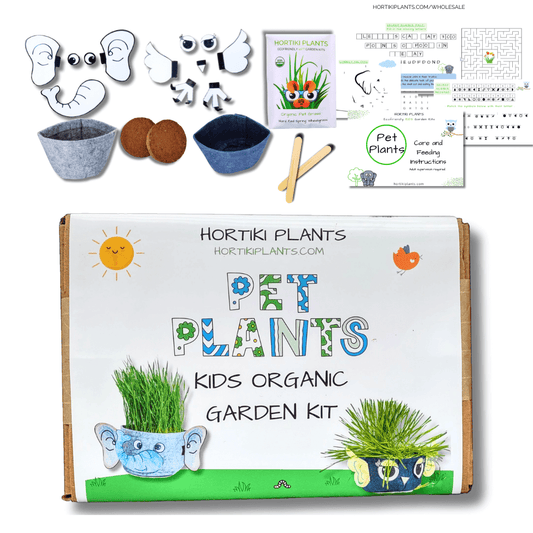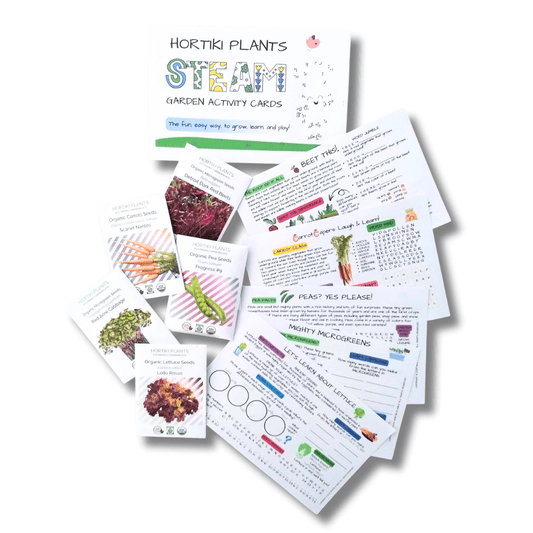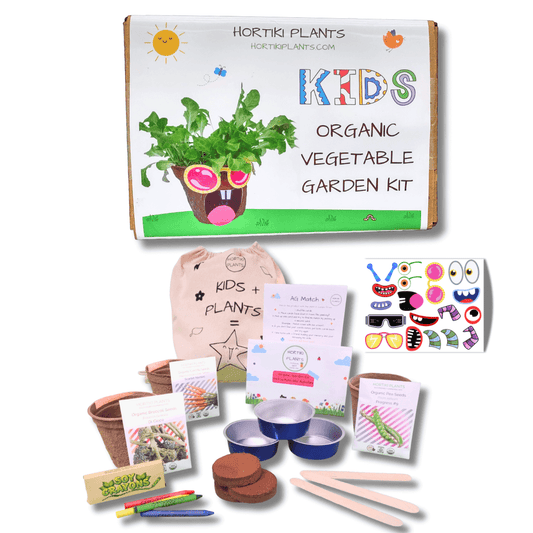25 Ways to Finance Your Growing Plant Addiction
VICTORIA LEBEAUXYou love plants. I love plants. You want more plants. I want you to have more plants. Science repeatedly shows more plants will make you healthier and happier. So what are we waiting for?! Read on for 25 ways to finance your growing, (totally healthy), plant addiction.

Avoid Wasting Money with Plant Purchasing Prep
1. Figure out how much money you need. Map and sketch out your space. Do some "research" (i.e. Instagram and Pinterest scrolling) to discover the types of plants you want. Follow-up with some actual research on plant care to make sure those plants fit your lifestyle. Go through our FREE Live Your Best Plant Life Mini Course for help developing your roadmap.
2. When do you need to have your plant money? Is there a certain time of year you need to plant the variety you want (i.e. Fall for spring bulbs and fruit trees)? Use our FREE Plants-At-A-Glance Calendar to get some idea of what to plant when.
3. Know what to do with your plant money once you have it. Make a list and assign a budget for each plant/space. The list can be as specific as naming exact plant varieties. Or, it can be simple parameters like 'tall tropical plant for entryway". Your budget can be an upper limit for each plant or it can be a budget per room if you want more flexibility. Know which items are 'must haves' and which are negotiable. Shopping with this type of list will ensure you stay on budget, yet there's still room for that amazing surprise plant find. Download this FREE Plant Budget Spreadsheet template to stay on track:
4. Minimize costly repairs from ill placed plants. Ensure you have space for water catchment trays to prevent water damage to countertops and floors. If you live in an apartment check your lease before drilling holes in ceilings or walls. If you are unable to hang plants from ceilings, include money for shelves in your budget.
Quick Wins
5. Include plants in your everyday household budget. How much money can you afford to spend on plants right now? You may have more than you think. Make a budget for your regular life and include plants on your list.
6. Ask for cuttings from friends and neighbors. Many plants can be started from a small cutting placed in water and sunlight. Ask a friend for a small snip and easily expand your plant collection. (Am I telling you to stroll around your workplace taking snips from office plants? Absolutely not. Wink).
7. Host a plant swap. Talk about a win. A plant swap will combine two of your favorite things, hanging out with friends and getting new plants. The swap can include full plants, seeds, and cuttings.
8. Grow plants from food scraps. Save seeds and cuttings and start a plant collection right from your plate. Plant the unused parts of root vegetables and leafy greens (tops of carrots, bottom of onions; bottom of lettuce heads); and seeds from botanical fruits. (Hint: Have an extra potato that's started to grow sprouts? They make lovely leafy vines and are easy to start. Check out the blog post: Now Is the Time - Sweet Potato Vine to learn how.
Dig-In Long-term
9. Encourage a good habit with a plant piggy bank. Trying to build a good habit into your life? Like daily exercise or foreign language study? Every time you hit your goal reward yourself with a deposit into a plant piggy bank. Budget for success so you stay financially on track, then full speed ahead towards a virtuous cycle of good behavior. (Hint: No cash - no problem. Set-up a virtual 'piggy bank' by using a Paypal or similar account and make electronic transfers).
10. Make money. Sell a craft, teach a lesson, walk a dog - if you really need extra outside money - go get some. Have a garage/yard sale. No garage or yard, apartment dwellers? Sale your items online then fill that free space with new plants!
11. Save money. Is there something you spend money on now that you would rather spend on plants? Could you eat out a little less each month and put that money toward plants? Can you skip a fashion purchase, or use up the cosmetics/toiletries you have before you buy new ones? Perhaps have a potluck with friends instead of going to a restaurant? Saving money is like making money!
Shop Off the Beaten Path
12. Support small business and become a regular at your neighborhood plant store. Neighborhood plant shops are run by real-deal plant lovers who will rarely throw plants away. Instead, if they really need room for new inventory, they will mark-down end of the season plants, helping you score great deals. (Hint: You will also save money by buying the right things at the right time of year. And you'll get free plant care advice leading to long-lasting, healthy plants.)
13. Sales or giveaways by interior plantscaping companies. Don't be shy about calling interior plantscaping companies (the companies who keep plants growing in malls, hotels, and corporate office buildings) to ask about sales or giveaways. They can't risk loosing a corporate client over a sick plant, so they often have high turnover. Look for local companies with semi-annual or yearly sales. These plants may need a little extra TLC but they are a budget friendly way to your indulge your appetite for new plants. (Note - Do try to avoid plants with insect infestations as you don't want to introduce pests into your space.)
14. Community gardens. Your local community gardens may have fundraising plant sales, or they may simply have extras plants or seeds available for free. Make it mutual. When you start seeds, plant some extra to share with the garden.
15. Online and offline bulletin boards. Moving plants can be expensive and (for long trips) dangerous. Plant owners will often sale or giveaway plants rather than move them long distances. Check on- and offline bulletin boards for freebies and cheapies.
16. Farmer’s markets. Herbs, flowers, and seasonal plants are a common sight at farmer's markets. Ask around to find out which markets in your area have plant vendors or if any fresh produce vendors occasionally sale plants.
17. Nonprofits like botanical gardens and arboretums sometimes offer plant sales once or twice a year as a fundraiser. These are great places to find unusual plants. Use this free tool from the American Public Gardens Association to find public gardens nationwide.
Thrifty Plant Care
18. Nurture beneficial insects. Lady beetles, ground beetles, lacewings, praying mantids, damsel bugs and spiders will prey on common garden pests. Learn to identify beneficial insects like these and if you see them on your plants - be nice.
19. Companion planting. Group your plants such that they benefit their neighbors. Research companion planting to find allies to the crops you want to grow. For example, basil may help repel tomato hornworms, so plant basil near your tomato plants. Nasturtiums may help control cucumber beetles so plant these with your cucumbers or other cucurbit plants.
20. Compost. Reduce the need for costly fertilizers by making your own compost. Compost can improve soil's structure and water retention. It also stimulates healthy roots and can improve the microbial health of your soil.
21. Reuse containers (wisely). Reuse containers from other products you buy, but do so wisely. You don’t want a mountain of old containers taking over your space. Keep only those containers that are both functional and beautiful. Also consider what you will use for water-catchment.
Thrifty Plant Skills
22. Books. Gardening books are a great way to save time. While a Google search can go on forever, books have an end. They have been well researched and edited by a team of professionals. That's hundreds of hours of research done just for you. (Hint: Libraries are keeping up with technology trends. In additional to traditional books they have digital books, digital magazines, and even full length video courses, all for free! If your local library isn't quite there yet, check the library system in a bigger city. Most will happily give non-residents a library card for a nominal yearly fee).
23. Agricultural Extension service. In the U.S. we have free access to information about gardening through our state agricultural extension service. Extension is a system designed to extend the knowledge developed by researchers at public universities out to the public. Each year hundreds of free, science based articles are made available to the public. Find your state's office using this map: https://nifa.usda.gov/land-grant-colleges-and-universities-partner-website-directory
24. Online (with limits). Learning online is free but be sure to use reputable sources. Keep from getting overwhelmed while searching online by setting boundaries for your search process. Be clear about what you need to know, where you will search, and for how long. Keep track of what you find with this "Search Smart" worksheet from our Simplify Garden Prep Blog Series.
Have fun
25. Don't get stressed out about buying, shopping for, or maintaining plants. Add plants a few at a time to ensure you are able to devote the time you need to your plant care. (And still have time left for your self-care)
Whew! That's it. Hope these ideas help you continue to grow an amazing plant-filled life. Are there any ideas you are planning to try? Let me know in the comments below. Hortiki and I would love to cheer you on!
P.S. Don't forget to download your FREE Plant Budget Spreadsheet. It's customizable so make it work to fit your plant life needs.
Sending you loads of plant love!
Victoria LeBeaux, PhD
Founder, Owner, Janitor - Hortiki Plants



